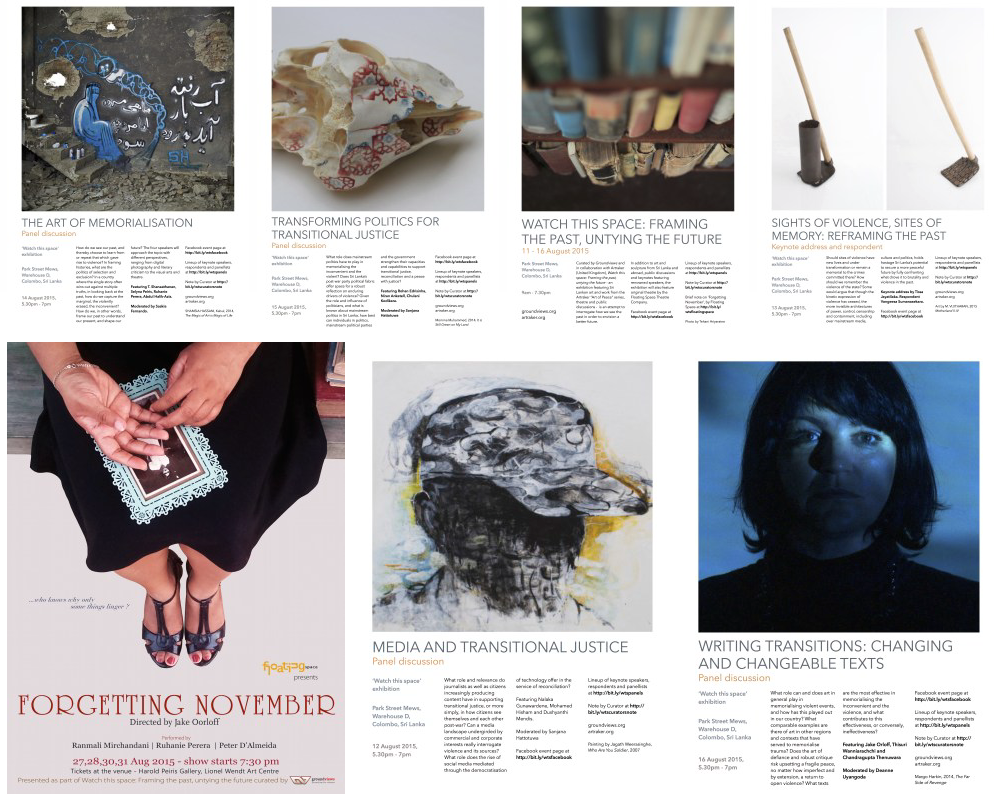Today, March 24th, is International Day for the Right to Truth Concerning Gross Human Rights Violations and for the Dignity of Victims.
It’s an opportune moment to recall an exhibition from 2015, curated by Groundviews and in collaboration with Artraker (United Kingdom).
Watch this space: Framing the past, untying the future – an exhibition featuring Sri Lankan art and work from the Artraker “Art of Peace” series, theatre and public discussions – was an attempt to interrogate how we see the past in order to envision a better future. The exhibition was held from 11 – 17 August 2015 at the Park Street Mews, Colombo.
Read the Curator’s Note to the exhibition here.
Visited by over 1,000 people over 7 days, ‘Watch this space’ featured keynotes and presentations by Radhika Coomaraswamy, Nalaka Gunawardene, Mohamed Hisham, Dushyanthi Mendis, Tissa Jayatilaka, Vangeesa Sumanasekara, T. Shanaathanan, Selyna Peiris, Ruhanie Perera, Abdul Halik-Aziz, Saskia Fernando, Chulani Kodikara, Niran Anketell, Rohan Edrisinha, Jake Orloff, Thisuri Wanniarachchi, Chandragupta Thenuwara and Deanne Uyangoda.
Panels and keynotes were anchored to the following topics:
- Media and transitional justice
- Sights of violence, sites of memory: Reframing the past
- The art of memorialisation
- Transforming politics for transitional justice
- Writing transitions: Changing and changeable texts.
As noted in the description of the panels held as part of the exhibition,
“…Through this exhibition, insightful and evocative Artraker artwork from Syria, Myanmar, Pakistan, Afghanistan and other countries was juxtaposed with carefully curated art from Sri Lanka, coupled with a theatrical production by the Floating Space Theatre Company, titled ‘Forgetting November’. Watch this space: Framing the past, untying the future is an attempt to use art that results from, reflects upon or responds to violence as a platform to foster meaningful conversations around what kind of a future we need in Sri Lanka.
Recognising that no real future can be constructed without reference to or learning from the past, Watch this space: Framing the past, untying the future offers frames through which to see the impact of violence, and the deep-seated challenges around memorialising.”
Complete podcasts/recordings of all the panels and keynote addresses can be accessed here.
Details of the exhibition, posters and related photos can be accessed here.
